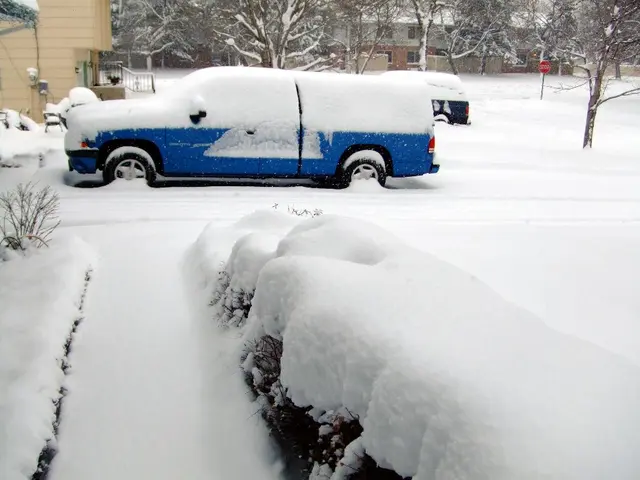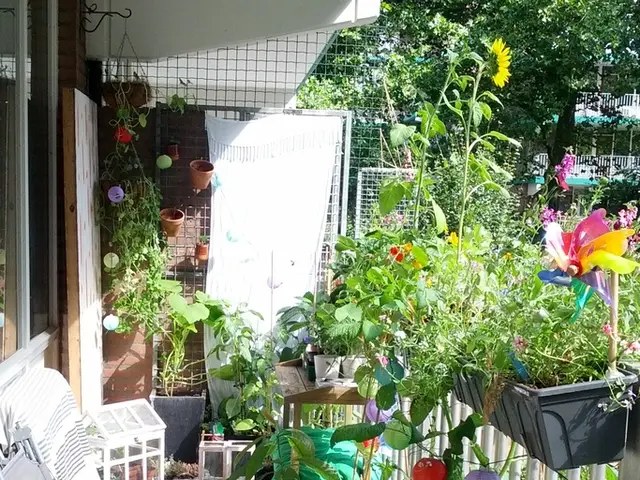Cracking the Code on Garden Walls
Essential Facts to Consider When Constructing a Garden Wall to Avoid Typical Blunders:
Whether you're sprucing up your outdoor oasis or reinforcing property boundaries, a garden wall can make all the difference. Yet, there's more to know than just stacking stones or bricks. Here are the top 5 insider tips for building a garden wall that meets your needs.
1. Mastering the Art of Wall Styles
From enclosing your courtyard garden to bolstering your beds and borders, garden walls come in various shapes and sizes. Traditional materials like brick or stone reign supreme, but modern alternatives such as concrete or corten steel are growing increasingly popular. Different styles serve specific purposes, so it's crucial to select the one that best complements your garden and home aesthetics.
2. Pocketing Some DIY Savings
Your wallet plays a significant role in your wall decision making. Here's a rundown of costs for various materials:
- Brick walls: £50 - £150 per meter
- Stone walls: £200 - £350 per meter
- Concrete stone-look walls: £70 - £100 per meter
- Gabion walls: £150 - £200 per meter
- Corten steel walls: £200 - £400 per meter
For a cheaper alternative, consider buildings walls of 1 to 1.5 meters in height and topping them off with a fence or a woven panel to reach the desired height. This design choice also provides an extra layer of visual intrigue and is ideal for smaller gardens.
3. Budget Digging for Savings
Even if you're hiring professionals, there's a way to save some cash during construction—dig your own footings. Here's a guide for the appropriate depths depending on your wall type:
- Single-skin walls (up to 1m): 300mm depth of concrete
- Double-skin walls (up to 1m): 150mm depth of concrete
- Double-skin walls (1-2m): 375-450mm depth of concrete
- Retaining walls (up to 1m): 150mm-300mm depth of concrete
Just remember to consider the ground conditions in your garden as they influence the required footing depth.
4. Surgery Over Replacement
If your current wall is looking a bit worse for wear, think about repairing it rather than replacing it. Cover loose or missing coping stones and repoint where necessary. Dry stone walls should be left to professionals, while reclaimed bricks can add an aged, characterful touch. Fast-growing climbing plants—whose roots can cause wall instability—should also be removed.
5. Know Before You Build
Building codes, regulations, and guidelines differ depending on your location, so it's essential to research local rules before getting started. Key considerations include height restrictions, structural safety, and building permits—especially for walls on property boundaries or those that retain soil. Consulting a landscape contractor and checking planningportal.gov.uk are good places to begin.
FAQ
Do I need foundations for a garden wall?
Answer: For most garden walls, foundations are necessary to ensure stability. Gabion walls are an exception, as the weight of the rocks keeps them in place without a need for footings above the ground.
Can I build a wall myself?
Answer: It's possible to build a wall yourself, especially gabion walls and corten steel walls. Timber and concrete walls also present more DIY-friendly options with easy-to-install products on the market. However, brick construction tends to be more labor-intensive and might require professional assistance.
Get the latest garden transformations, project advice, and more! Sign-up for our platform's newsletter today.
Author:Holly Reaney is a content editor for one of the leading home improvement platforms, with experience in feature writing, sub-editing, and regular writing for Period Living magazine, Country Homes & Interiors, and the platform website. She's passionately dedicated to traditional and country-inspired interiors, with a particular love for kitchen design and exploring the hills and countryside of the Lake District. As a gardening enthusiast, Holly keeps a close eye on indoor and outdoor plant trends, gleaning inspiration from both.
- incorporating home-improvement and personal-finance tips, consider investing in houseplants for a low-cost interior design solution that can help purify the air in your home. Research budget-friendly options online or seek advice from gardening experts at home-and-garden stores.
- for a modern take on home security, explore home automation systems that can be integrated with lifestyle choices. Consider smart lighting, doorbells, or home monitoring systems to enhance your home's safety without breaking the bank.
- when budgeting for garden projects, remember that certain tasks can provide significant cost savings. For instance, take the DIY approach to building smaller garden walls, as outlined in the article, to reduce costs while adding aesthetic value to your outdoor space.
- create a financial plan for your gardening and home improvement projects by setting a budget, determining the necessary materials, and allocating funds accordingly. Research low-cost alternatives for materials or tools, and take advantage of sales or discounts when possible to minimize expenses.






